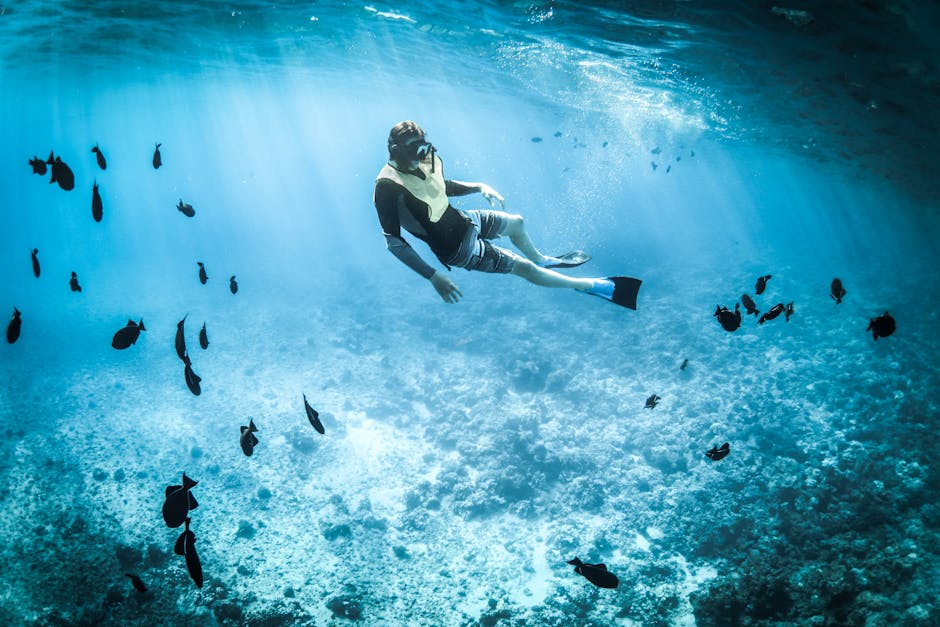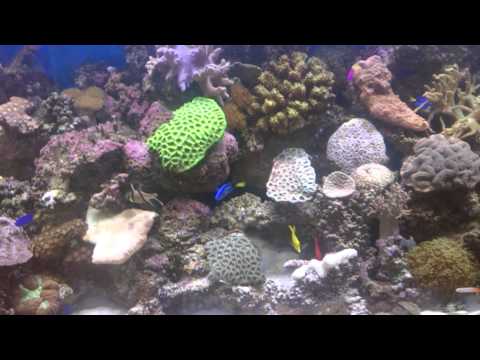All About the Clownfish
3 years ago admin 0
Hi guys and girls, I’m ReefMan – and this is all about the clownfish. There are about 30 species of clownfish. They’re spread out into two different genuses all in the same family. So we have the Premnas genus, which is only one species, the maroon clownfish. Now all of the rest of the clownfish are Amphiprion, which includes all the common clownfish that you would keep in your tank/ Things like the tomato clown, the Ocellaris Percula. Those are the two most common by far clownfish that we keep
They’re all in the Amphiprion genus. Amphiprion Percula is identified by 10 dorsal spines on the fin, while Ocellaris has 11
So if we look at the fin of my clownfish here, we could count them or try to at least and you’d, be able to identify the species. Now keep in mind that a lot of times what you buy in the pet store for clownfish are actually hybrids, because there’s a lot of selective breeding going on to get special banding. The traditional clownfish just has three bands across its body and they’re all solid. They don’t intermix
<?xml encoding=”UTF-8″>
There’s just three bands of white and then an orange background. Obviously in breeding they’ve created all manner of stripes that merge and combine and are spotted and all sorts of things. So these are going to be harder to identify on a species level, because they’re really probably a mix of the two species at some point or at least very selective breeding, So both Percula and Ocellaris were both identified first in the 1800s, I think 1802 For Percula And Ocellaris in 1830, both of them were identified by French naturalists
Ocellaris was identified by Cuvier and he is notable because he’s also the father of modern paleontology. There are no clownfish in the Atlantic Ocean.
They’re all Pacific fish And they are widespread throughout the entire Pacific, Although, depending on the species, the individual species might be only found in a small part of the Pacific Ocean.
Because clownfish are so widespread and so common, especially Percula and Ocellaris, they are a great beginner species for your home saltwater tank. They take just normal temperatures. Nothing special upper 70s low 80s is fine and normal salinities And they are going to be very forgiving to maybe not the most amazing water quality. They eat almost anything that you could put in the tank between flakes pellets frozen food.
If you can get it in your fish tank as appropriately sized piece, your clownfish will probably eat it and do just fine
There are also damselfish. They’re in that family of fish, and they are quite territorial as breed fish go. They are more than willing to bite you when you put your hand in the tank, if you’re in their area, and they will certainly fend off their anemone or whatever might be to other fish. All clownfish are actually born male and as they grow if they’re the dominant fish, they turn female, which means that if you go to your local fish store – and you buy two very small, immature clownfish, one of them will become the dominant one and become larger than the other, and that larger one is going to be ihe female
In the wild they pair up, and then they live for the rest of their life as that pair and they might live in an anemone. In the wild clownfish are found in anemones and there’ll be a main pair of clownfish in that anemone
There might be other subordinate clownfish in that group, but they are not mature, they don’t breed, and no one really knows why these other clownfish don’t just go out on their own to somewhere else where they could meet another clownfish and start their own group. The theory, at least, though, is that, if you’re in a group and you’re not the dominant fish, eventually that dominant fish is gonna get eaten or die, and then you can move up a level and so on and eventually you are the dominant fish in that anemone. But it’s not been proven, and no one really knows why clownfish do this behavior! That’S an interesting study opportunity for someone, As I mentioned, clownfish in the wild and in your tank like to host anemones
In our tank, they most often are going to host Bubble Tip Anemones, That’s the most common kind of anemone that we have But they’ll host all sorts of other things. They’Ll host the corner of your tank, your powerheads, your heater, your algae scraper, All sorts of things in your tank can be hosted by a clownfish
In the wild, though, there are two kinds of anemones that they actually prefer to host It’s Heteractis magnifica, which is the Magnificent Sea Anemone And the Stichodactyla gigantea, which is Giant Carpet Anemone. Those are the two kinds of anemones, the only two that clownfish are commonly found in in the wild. Nobody really knows exactly how clownfish survive the sting of the anemone
There are a bunch of theories, though The two leading theories is that they just evolved to resist the sting and they do get stung, but it doesn’t hurt them. The other theory – and I think, maybe a little bit more likely – is that the slime coat of clownfish is actually sugar-based instead of protein-based


And that makes the anemone not see the clownfish as food because it rubs up against it. It detects sugar, a slime made out of sugars instead of slime made out of protein, And you know you’d expect a fish is made out of protein and muscles. So anemone would go the same route and not sting something that it doesn’t think is food
They have done tests where they removed the slime coat of a clownfish and then put it into a tank with an anemone When it guess into the anemone. The anemone eats the fish, so there’s definitely something to the slime coat. Although there’s not been enough, research done to really nail down exactly what it is about. The clownfish slime coat that protects them from their anemones. Clownfish are one of the few fish that you can reliably breed on your own in your home, aquarium.
If you have a pair and you’re taking good care of them, so feeding them regularly good water quality, eventually they will lay eggs and those eggs will hatch. And it’s just up to you whether you want to pull those eggs out and raise them on your own or not.
And that’s why clownfish are really one of the original captive-bred fish that you can get for your tank.
The clownfish in my tank are captive-bred They’re, not wild-caught, And I think the more that we can do. Captive-Breeding programs, the better off. We breed a lot of dottybacks a lot of gobies
I’M starting to get some Pygmy Angelfish Those kinds of things captive-bred, But clownfish really started it all. If you’re interested in trying your hand at marine fish breeding, the first one to start with, is really going to be the clownfish, The eggs hatch. After a few days,
I think it’s four to seven days after they’re laid And if you say put a ceramic tile in the tank near where the clownfish are they’re likely to lay the eggs on that tile. Then you can remove them from the tank. Take them off into your tank. That you’re gonna raise the larva.
And the trick is really being able to feed them, So there are other fish like I mentioned, angelfish all sorts of things that will breed in the tank and that’s not the hard part.
The hard part is getting the newly hatched larva to survive, So you’ll have to grow some algae cultures. Copepods things like that to be able to feed these brand new tiny little fish larva And then after a week or two they’re big enough to eat newly hatched brine shrimp things like that, They kinda you know as they grow. They can take bigger and bigger things. But it’s just those first dew days, the first couple of weeks. That really is the difficult part for clownfish. If you’re interested, there is a whole bunch of resources out there on raising larval clownfish
And really the hard part really is just having the food for them. So if you think that’s something that you would be interested in doing I really encourage you to go out and look at how to do that. There’S a wealth of information out on the internet Hope this was interesting, I think just about all of you probably have had clownfish or do have clownfish in your tank.
I’D be curious to know if I missed anything things that are interesting about the clownfish that you have
There’s all different kinds of species: I’ve only ever had maroon clownfish and the Ocellaris and Percula, but there’s all sorts of other kinds of clownfish out there as well and they’re all similarly easy to keep So yeah until next time. Thanks for watching
Don’t forget to like and subscribe.
Read More: How to Keep Predator Fish





